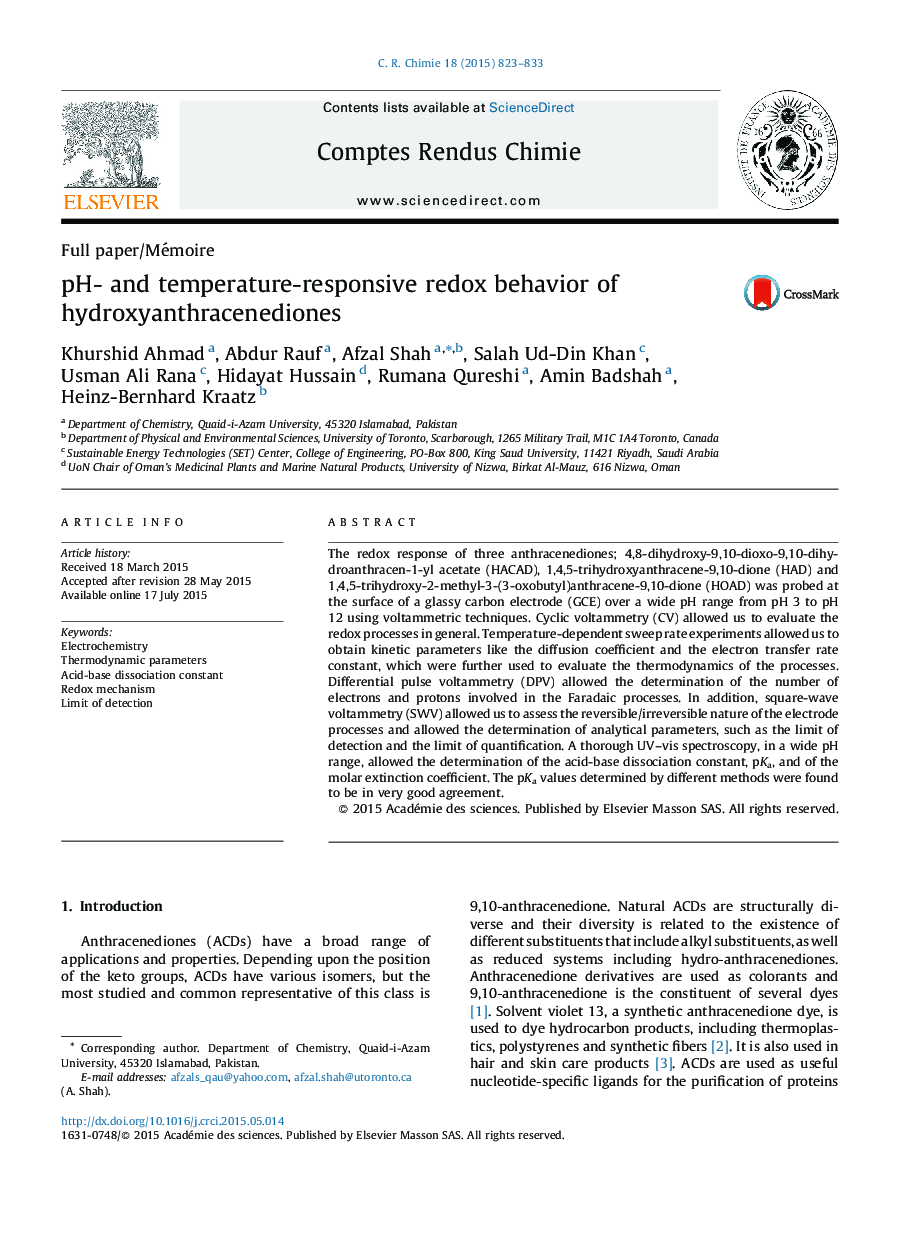| Article ID | Journal | Published Year | Pages | File Type |
|---|---|---|---|---|
| 170491 | Comptes Rendus Chimie | 2015 | 11 Pages |
The redox response of three anthracenediones; 4,8-dihydroxy-9,10-dioxo-9,10-dihydroanthracen-1-yl acetate (HACAD), 1,4,5-trihydroxyanthracene-9,10-dione (HAD) and 1,4,5-trihydroxy-2-methyl-3-(3-oxobutyl)anthracene-9,10-dione (HOAD) was probed at the surface of a glassy carbon electrode (GCE) over a wide pH range from pH 3 to pH 12 using voltammetric techniques. Cyclic voltammetry (CV) allowed us to evaluate the redox processes in general. Temperature-dependent sweep rate experiments allowed us to obtain kinetic parameters like the diffusion coefficient and the electron transfer rate constant, which were further used to evaluate the thermodynamics of the processes. Differential pulse voltammetry (DPV) allowed the determination of the number of electrons and protons involved in the Faradaic processes. In addition, square-wave voltammetry (SWV) allowed us to assess the reversible/irreversible nature of the electrode processes and allowed the determination of analytical parameters, such as the limit of detection and the limit of quantification. A thorough UV–vis spectroscopy, in a wide pH range, allowed the determination of the acid-base dissociation constant, pKa, and of the molar extinction coefficient. The pKa values determined by different methods were found to be in very good agreement.
